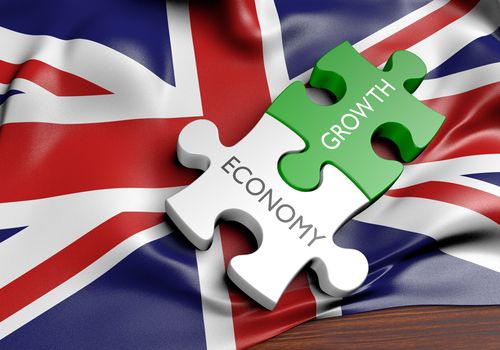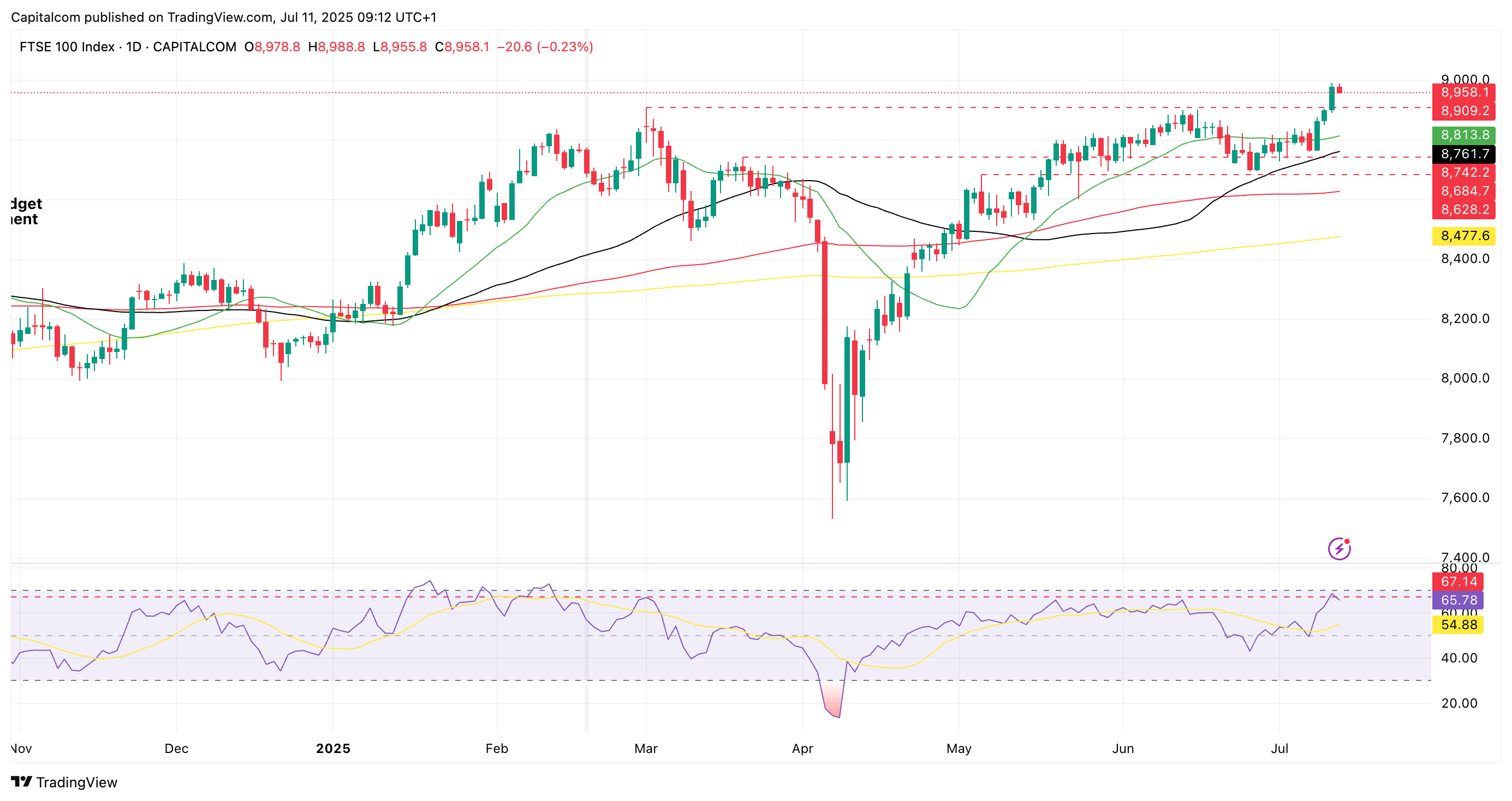UK GDP contracts again in May as FTSE 100 eyes new highs
The UK economy experiences negative growth in May leading markets to price in a rate cut from the BOE in August
The latest UK economic figures reveal a second consecutive monthly contraction in GDP, underscoring a weakening economic landscape and raising concerns about the country’s near-term trajectory.
In May, the UK economy shrank by 0.1%, following a 0.3% decline in April. The downturn was led by a 0.9% drop in industrial production and a 0.6% decrease in construction output. Although the services sector showed a modest 0.1% expansion, it wasn’t enough to counterbalance weakness in the broader economy.
These figures caught markets off guard, as analysts had expected a slight rebound in May. Should June data also show negative growth, the UK will face its first quarterly contraction since Q4 2023, following a stronger-than-expected 0.7% expansion in Q1. Chancellor Rachel Reeves called the results “disappointing,” but reaffirmed the government’s focus on long-term recovery through targeted investment and social support initiatives.
With inflation easing and economic momentum weakening, attention now turns to the Bank of England. Markets are pricing in a 78% probability of an interest rate cut at the central bank’s August meeting, which would reduce the current base rate of 4.25%. Such a move is widely seen as necessary to help stimulate growth.
In contrast to the subdued macroeconomic backdrop, the FTSE 100 continues to demonstrate remarkable resilience. The index reached a record high on Thursday, closing just shy of the 9,000 mark. Friday morning saw a slight cooling in bullish sentiment, with the RSI slipping to 65—likely reflecting some profit-taking after the GDP disappointment. Still, the technical outlook remains constructive, and the 9,000 level could attract fresh buying interest in the near term.
Much of the FTSE’s strength has been driven by outperformance in the mining sector, with heavyweights such as Glencore, Rio Tinto, and Anglo American posting substantial gains. Broader investor sentiment remains upbeat, bolstered by expectations of a more supportive policy environment and potential reversals in U.S. trade policy.
That said, risks remain. If optimism surrounding global trade deals begins to wane, or if domestic fiscal pressures intensify, much of the current positive sentiment could be quickly unwound. Investors should remain mindful of these headwinds, even as technical and sectoral dynamics continue to support the FTSE 100’s ascent.
FTSE 100 daily chart
Past performance is not a reliable indicator of future results.